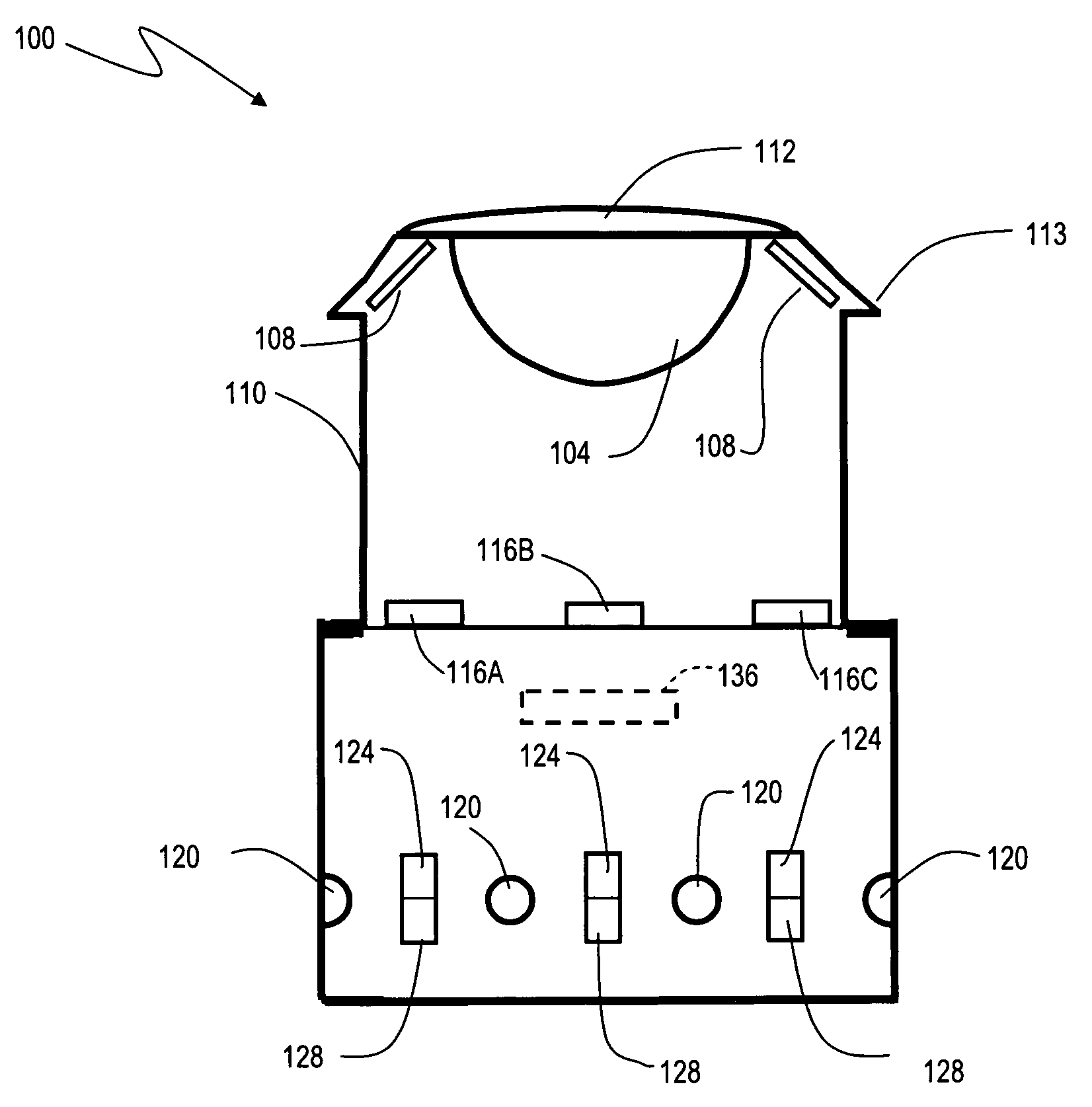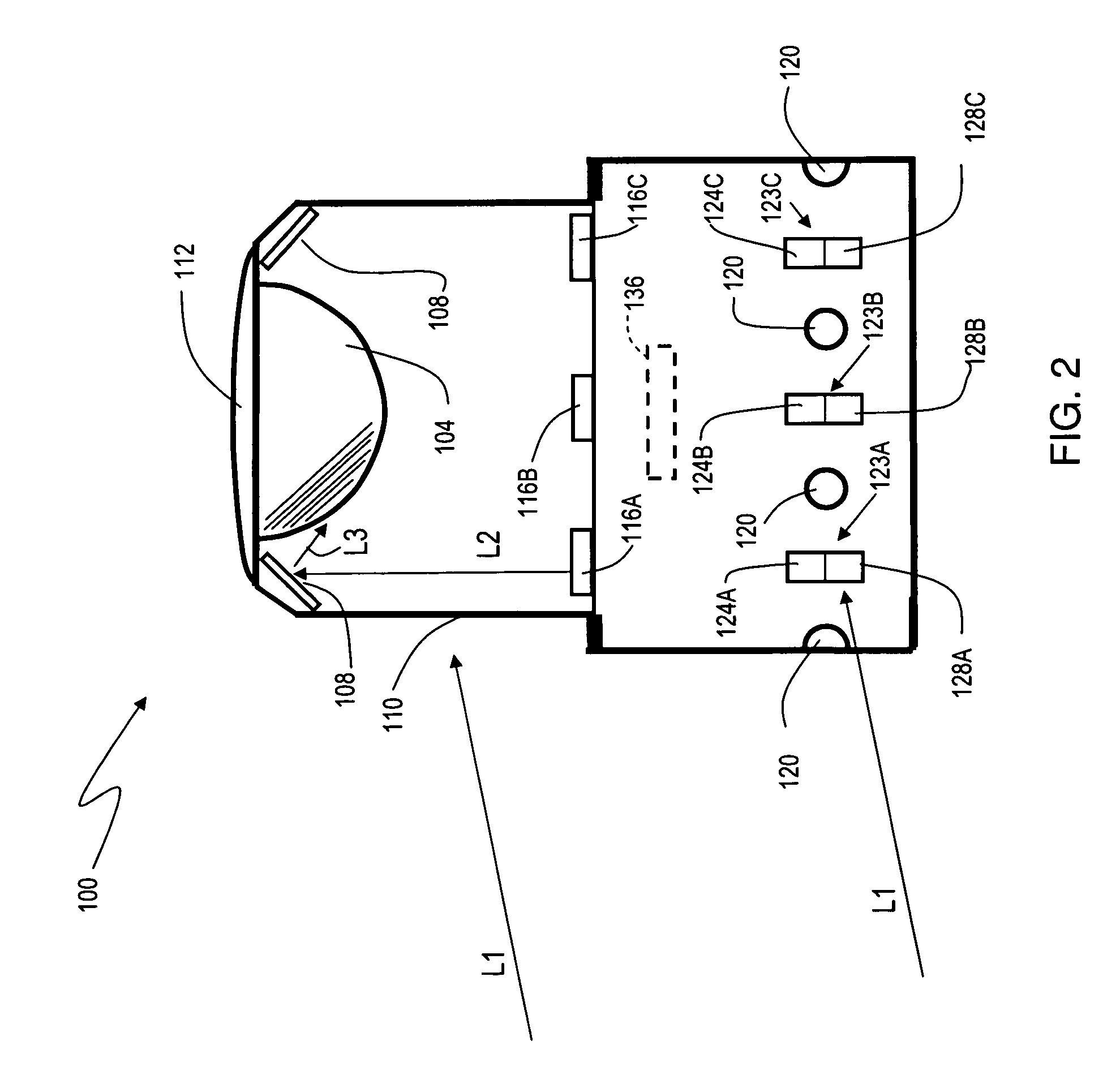Panoramic camera
a technology of panoramic camera and panoramic lens, which is applied in the field of surveillance systems, can solve the problems that the artificial light source cannot omit sufficient ultraviolet light to trigger the photochromic effect, and cannot invoke the desired photochromic
- Summary
- Abstract
- Description
- Claims
- Application Information
AI Technical Summary
Benefits of technology
Problems solved by technology
Method used
Image
Examples
Embodiment Construction
[0021]FIG. 1 and FIG. 2 show a side view of a camera 100 in accordance with an embodiment of the present invention. The camera 100 comprises an optical housing 110 that is substantially transparent. A photochromic reflector 104 is disposed at the top of the housing, and configured to reflect the light from a 360 degree field of view around the camera to an image capture element 136 located within the base of the camera. Top cover 112 provides an overhang 113 that extends beyond the circumference of the optical housing 110 and circumscribes it, so as to block the overhead sun's rays from going directly into the camera. Radial mirror 108 serves to direct UV light from light sources 116 onto the reflector 104.
[0022]Around the exterior of camera 100 are a plurality of UV (ultraviolet) lights 116A-116C that are directed at photochromic reflector 104. This enables the photochromic reflector 104 to be darkened in a particular direction as needed, providing additional control of the photoch...
PUM
 Login to View More
Login to View More Abstract
Description
Claims
Application Information
 Login to View More
Login to View More - R&D
- Intellectual Property
- Life Sciences
- Materials
- Tech Scout
- Unparalleled Data Quality
- Higher Quality Content
- 60% Fewer Hallucinations
Browse by: Latest US Patents, China's latest patents, Technical Efficacy Thesaurus, Application Domain, Technology Topic, Popular Technical Reports.
© 2025 PatSnap. All rights reserved.Legal|Privacy policy|Modern Slavery Act Transparency Statement|Sitemap|About US| Contact US: help@patsnap.com



